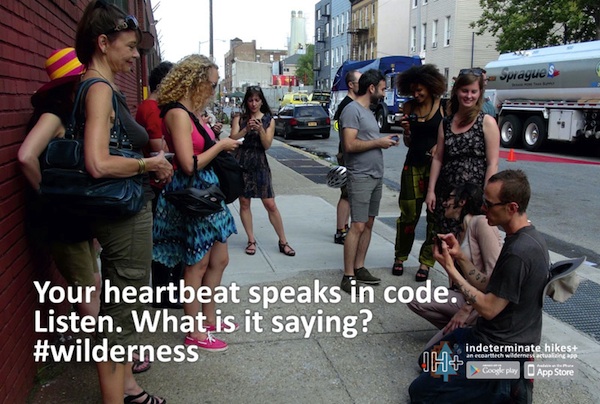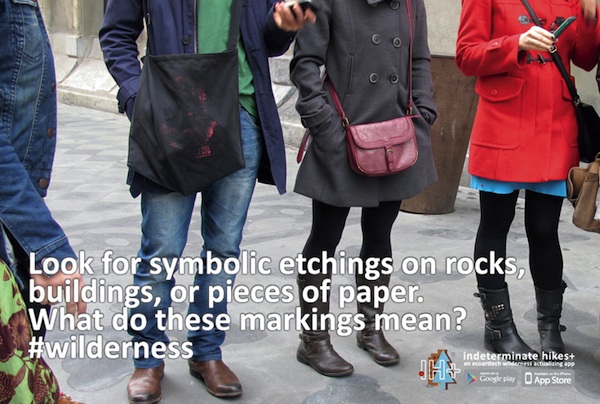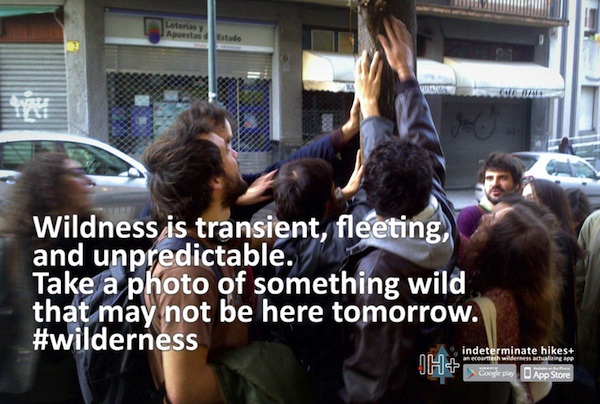This week’s cover story in The Hollywood Reporter reveals that animal cruelty remains a deeply disturbing and widespread trend in Hollywood and US television. What’s more, reporter Gary Baum has uncovered a pattern of widespread corroboration with this pattern by members of the American Humane Society, who play a key role by visiting sets and issuing their famous “No Animals Were Harmed During the Making of This Film” seal for producers to use in their end credits to alleviate viewers concerns. AHA representatives are not alleged to have committed abuse. Instead, Baum reports that multiple instances have occurred on the set of such films as Life of Pi and The Hobbit and HBO’s now cancelled show about horseracing, Luck and that AHA overseers have covered up or ignored blatant instances of abuse. As Baum notes, the pattern is pervasive across the industry.
Of course, Hollywood history is fraught with stories of animal abuse but many of us have come to see the AHA as a trusted organization that serves as a watchdog and protector of non-human animal rights.
Baum’s story “Animals Were Harmed: Hollywood’s Nightmare of Death, Injury and Secrecy Exposed,” appears in the Dec. 6 issue. Additionally, Baum has posted PDFs of the Research Documents used to write the story, offering some assurance of the validity of these startling claims.
I need to get out of the house, you say to some friends.
Okay, let’s go on a nature walk, they say.
Sounds good, you say, let’s take the train downtown.
Perfect, they say.
Taking a nature walk downtown is an idea you might not hear too often–unless the speakers are using the eco-art app Indeterminate Hikes+. To most people, a nature walk spent in the city would be a waste. Nature is out there, a destination to be travelled to. It is forests and bogs, fields and streams. It is definitely not buildings, sidewalks, bridges, or cement. To connect with nature we need to leave our built environment, turn off our distracting cell phones, and retreat into the unspoiled ecology that we have lost touch with.

Image of Indeterminate Hikes+ Performance, Bushwick, Brooklyn, EcoArtTech (Leila Nadir + Cary Peppermint), 2012.
Indeterminate Hikes+ serves to confound these common assumptions. The app, which is part environmental statement, part social experiment, and part art, asks us to reconsider our notions of place, environment, nature, and technology. IH+ was created by the new media art duo Leila Nadir and Cary Peppermint, who together make make up EcoArtTech. Nadir is a critic, scholar, artist, and creative writer who specializes in the intersection of environmentalism and the humanities, while Peppermint is a media artist whose work examines the effect of online spaces on our imagination of the environment. As EcoArtTech they have created architectural interventions, net art, public performances, and multiple other projects involving the relationship between media and the environment.
Indeterminate Hikes+ appears, at first, to be modeled after other map-based travel apps, but unlike its predecessors, IH+ focuses on the journey rather than the destination. Following the familiar Google Maps formula, the user enters their location and destination. Unlike Google Maps, however, IH+ formulates a random, often circuitous route. Along the way the “hike” is interrupted by prompts. Users might be instructed to shake hands with a non-human animal, smell the wifi, or take a picture of something wild that will not be there tomorrow. They might be encouraged to take a picture of their findings or text them to a friend. They might even be instructed to stop the hike and turn off their phone for the rest of the day. These “scenic vistas” are designed to slow users’ pace, expose unseen ecology, and re-embed us in our environment.
Though IH+ offers a fun and creative platform to engage with one’s surroundings, it also serves urgent environmental purposes. As Gary Snyder reminds us, “Our relationship to the natural world takes place in a place and must be grounded in information and experience.†Without this awareness of the places we inhabit, we will inevitably continue to destroy them. By placing activities traditionally associated with “nature” in an urban setting, IH+ dissolves the barrier between supposedly un-natural urban spaces and natural ecological ones. It demonstrates, through active participation, how a city can be as much of a wilderness as a state park, and helps urban dwellers re-imagine their home as part of nature. As Snyder says in his description of the bioregional movement, the process of re-embedding oneself in place “is not just a rural program: it is as much for the restoration of urban neighborhood life and the greening of the cities†(42). The first step to preserving one’s environment is acknowledging its ecological significance, whether it is a cabin in the woods or a studio apartment in Brooklyn.
IH+ also challenges the role of technology in our lives, as smartphones become a symbol of distraction and consumption in an increasingly mediated society. Digital media scholar Jason Farman, in Mobile Interface Theory, claims that “Throughout the history of technology, we have attempted to distance bodies and spaces as much as possible.†As we spend more and more time in virtual technological spaces, our physical ecological home is becoming increasingly secondary. Citing new digital technologies to be especially problematic, he continues: “This dissection is particularly noticeable in the age of the mobile phone, in which we attempt to dislocate bodies from particular spaces and spaces from particular bodies†(19). From an environmentalist’s perspective, this divorcing of mental space from physical place paves the way for further environmental disregard. IH+, however, wonders if technology can be used to reverse this process. It repurposes the features of smartphones that degrade our sense of place in order to increase awareness of the local. Instead of using digital maps to bypass our environment in the fastest, most efficient way possible, IH+ uses them to explore and connect to the actual spaces that the map represents. Instead of using texts and pictures to shift our attention to an absent other, it uses them to remind us of the unique aspects of our local place.
Because of IH+’s experimental nature, an individual’s experience with the app will inevitably vary, producing widely divergent but equally valid reactions. Some may notice novel and engaging aspects of their surroundings that had been previously overlooked. Some people may find technological mediation of nature to be confusing or distracting. Most likely users will experience a little bit of both. IH+ does not attempt to definitively answer questions about the way we imagine nature, or the role of technology in our environmental consciousness. Instead, it attempts to ask them in a unique, engaging, and profoundly modern way.
Works Cited
EcoArtTech. Artist Website. <www.ecoarttech.org>.
Jason Farman. Mobile Interface Theory: Embodied Space and Locative Media. New York: Routledge, 2012.
Gary Snyder. Practice of the Wild. New York: North Point Press, 1990.
More than two years after the Fukushima nuclear disaster in Japan, a number of questions linger regarding the paradoxical impact that the meltdown is having on the environment, both locally and globally. Surely, filmmakers entering such festivals as Earth Vision in Tokyo and audiences familiar which such documentaries as Fukushima Never Again and Two Years Later and Frontline’s Inside Japan’s Nuclear Meltdown in the US will be taking up this complex topic in the year ahead.
On one hand, as the Jota Kanda, an oceanographer at Tokyo University of Marine Science and Technology told the New York Times recently, “Obviously, there is some continuing source of cesium 137. We are not sure exactly what is happening, but we are seeing a bigger than expected effect on the environment.†Due to the widespread concerns about nuclear radiation resulting from the disaster and public protests, Japan’s government promised to phase out nuclear power and replace it with green energy over the coming decades.
As reported yesterday by Public Radio International’s The World, Japan’s new government has not abandoned those efforts but has also overseen a massive boost in energy consumption from oil, coal, and gas.
As a result, the country that held the Kyoto Climate Summit that led to the most comprehensive and influential international treaty on the issue ever created has now announced that it will “abandon its promise to make deep cuts in greenhouse gas pollution” and fail to meet the levels established by the Kyoto Treaty. “Essentially, all of the gains they had expected to get on carbon emissions had been wiped out by the loss of nuclear power,” says Peter Thomson, The World’s environment editor.
As the world’s nations search (or fail to search) for effective ways to meet energy consumption demand while lowering greenhouse gas emissions, nuclear power has taken on a renewed visibility (as discussed here in previous posts). However, as the Fukushima disaster and films made about the issue remind us, there are no easy answers.
Check out this fascinating interview with Adrian Ivakhiv, author of Ecologies of the Moving Image: Cinema, Affect, Nature (2013) and several important articles in the field of ecocinema studies, by Harlan Morehouse, a PhD candidate at the University of Minnesota, for the journal Space and Society: Environment and Planning D.
The Society for Cinema and Media Studies (SCMS) has announced that it has officially approved the formation of a new special interest group (SIG) focused on Media and the Environment.
For information about the group, including a mission statement, goals and objectives, and by-laws, head to the Media and Environment SIG page at the SCMS website. Â If you are a member of SCMS and would like to join the group there is a link at the bottom of the group page that you can follow to sign up.
Prior to the first official meeting at the next SCMS conference March 2014 in Seattle, the group will be holding elections to elect co-chairs. Sign up now and look for more information regarding elections and planning for the Seattle SCMS conference over the coming months.
A big thanks to co-organizers Hunter Vaughan and Janet Walker for drafting the necessary documents and pitching the proposal to SCMS. Thanks as well to executive committee members Nicole Seymour, Nicole Starosielski, and Steve Rust, and Graduate Student Representative Kiu-Wai Chu for their support.
UK subscribers or those traveling to London in the near future may find the following one-day film festival event of interest:
The Nuclear Question
Despite meltdowns and mountains of radioactive waste, could nuclear really save the planet?
As plans go ahead for the UK’s first new nuclear plant in twenty years, join us for a day of brilliant films exploring the pros and cons.
Saturday 16th November, 2013 at 12:00pm
The Ritzy Cinema
Brixton Oval, Coldharbour Lane, London, SW2 1JG (T: 0871 902 5739)
Films individually priced, or buy a discounted full day ticket for £20 (£18 conc)
Amazingly, nuclear power is now the cry from many climate change warriors!
In a remarkable about-turn, climate change warriors and environmentalists are becoming pro-nuclear. They believe that with the surge in demand from the developing world, nuclear energy is our planet’s ‘cleanest’ option, but with Fukushima still spewing radiated waste, the arguments against it remain potent.
__________________________________________________________________________________________________
PROGRAMME
Six documentaries from different points of view; four international directors in discussion; a one-time chance to be informed, take part and focus on this key issue for the future of our planet. Our extensive programme includes Oscar-nominated director and former anti-nuclear campaigner Robert Stone’s controversial PANDORA’S PROMISE, which meets the energy experts who have undergone the most radical of conversions. In addition we will have films looking at disasters such as Fukushima and Chernobyl, and a very special sneak preview of a brand new documentary on potential nuclear answers.
We end the day with a panel discussion on the past, present and future of nuclear, featuring Robert Stone (dir. Pandora’s Promise), Esther Hoffenberg (dir. Welcome to Nuclear Land), Frankie Fenton (dir. The Good Reactor) and Paul Johannessen (dir. Women of Fukushima).
Thanks to Helen Hughes for passing this information along.
We’ve added a new link in our blogroll. Please welcome Jennifer Browdy de Hernandez, who blogs about social and environmental justice and advocacy issues at Transition Times. Jennifer also has a keen interest in the role that media can play in social and environmental justice advocacy and we encourage you to check out her work.
Here’s the information from the About page at Transition Times:
 Transition Times is written and produced by Jennifer Browdy de Hernandez, an visionary writer, teacher, organizer and public speaker with a passion for social and environmental justice.
Transition Times is written and produced by Jennifer Browdy de Hernandez, an visionary writer, teacher, organizer and public speaker with a passion for social and environmental justice.
Dr. Browdy de Hernandez earned her Ph.D from the Department of Comparative Literature at New York University in 1994, specializing in the politics of identity in testimonials and autobiographies by marginalized people from Latin America, the Caribbean and North America.
She is an associate professor of comparative literature at Bard College at Simon’s Rock, where she teaches world literature, gender studies, media studies, and environmental and social justice advocacy through literature and media.
For more than a decade, she has directed a major conference in observance of International Women’s Day, and she is the founding director of the month-long, county-wide Berkshire Festival of Women Writers.
She is the editor of the anthology Women Writing Resistance: Essays on Latin America and the Caribbean (South End Press, 2004), and co-editor of African Women Writing Resistance: Contemporary Voices (University of Wisconsin Press, 2010).
Her memoir, “The Elemental Journey of Jaye Treestar: A Purposeful Memoir of Personal and Planetary Transformation†is currently seeking a publisher.  Its affiliated workshop will be launched in March 2014 at Kripalu Center for Yoga and Health.
The views expressed on this blog are the author’s alone and do not represent her employer or any other third party.
CFP: 8th NECS Graduate Workshop: Nature in Motion: Cinematic Ecologies and Environments
8th NECS Graduate Workshop: Nature in Motion: Cinematic Ecologies and Environments
Hosted by the Department of Film Studies, University of St Andrews
20-21 February 2014
—
At the end of the nineteenth century, one critic remarked that, in film, we are able to see “nature caught in the act.†Indeed, cinema and nature seem linked in powerful and complex ways. From proto-cinematic applications in the field of biological motion studies and contemporary visualizations of climate models, to popular documentaries like An Inconvenient Truth (2006) and more experimental work such as Leviathan (2012), the moving image continues to profoundly shape how we see and understand nature and the natural world. Furthermore, the cinema manifests a provocative paradox: it is a supremely artificial phenomena, unimaginable apart from the modern scientific and technological advances that have enabled the almost-total domination of nature by human activity. Nevertheless, cinematic representations can produce what are arguably the most successfully ‘naturalistic’ images available to the plastic arts. Moreover, the cinema itself interacts with a network of other technologies of communication and representation–a veritable media ecosystem as complex as any found in nature.
As both these media and our planet undergo rapid changes in the twenty-first century, the relationship between them, and indeed, between the ecosphere and the human techno-social sphere, calls out for new practical approaches and integrated theoretical understanding. How, for instance, might we understand the exhaustion of the celluloid medium in the face of new digital cinematic technologies in parallel with the depletion of the Earth’s resource reserves and the call for new alternative energy technologies? What does the cinema’s replacement of physical reality with virtual, computer-generated, imagery suggest about our current relationship to the material world?
NECS invites doctoral candidates and early-career researchers to submit proposals for contributions addressing these and related topics, including, but not limited to:
Theoretical Issues:
Nature and classical film theory (Bazin, Benjamin, Kracauer, etc.)
Contemporary cinematic ecocriticism
Cinema and ecosophy
Media ecology: Spaces of cinema exhibition (expanded cinema and environmental technologies, etc.)
Representational Issues:
Cinema and geological time, landscape, or animal/non-human performers
Special effects and the cinematic sublime
Comparative studies of environmental content in commercial cinema versus the avant-garde
Disaster films and ecological crises
Documentary rhetoric and environmental activism
Practical Issues:
Film production and its environmental impact
Cinema as tool for executing or communicating scientific/environmental research
The moving image’s application in environmental/life sciences
—
Submissions deadline: December 15th 2013
Please address abstracts (300-500 words) along with institutional affiliation and brief biographical note to: graduates@necs.org Notification will follow shortly thereafter.
The conference language is English.
Participants will need to cover their own travel and accommodation expenses. Travel information as well as a list of affordable hotels and other accommodation will be provided in the beginning of January.
Conference attendance is free, but valid NECS-membership is required to participate.
Participants must register with NECS at www.necs.org and pay their fee by February 1st. For the terms of NECS membership, please also refer to our website.
NECS Graduate Workshop Organizers:
Dr. Miriam De Rosa (Catholic University of Sacred Heart, Milan)
Heath Iverson, Doctoral Candidate (University of St Andrews)
Alena Strohmaier, Doctoral Candidate (Philipps-University Marburg)
—
Heath Iverson
PhD Student, Film Studies
University of St Andrews
99 North Street
St. Andrews, KY16 9AD
Scotland, UK



